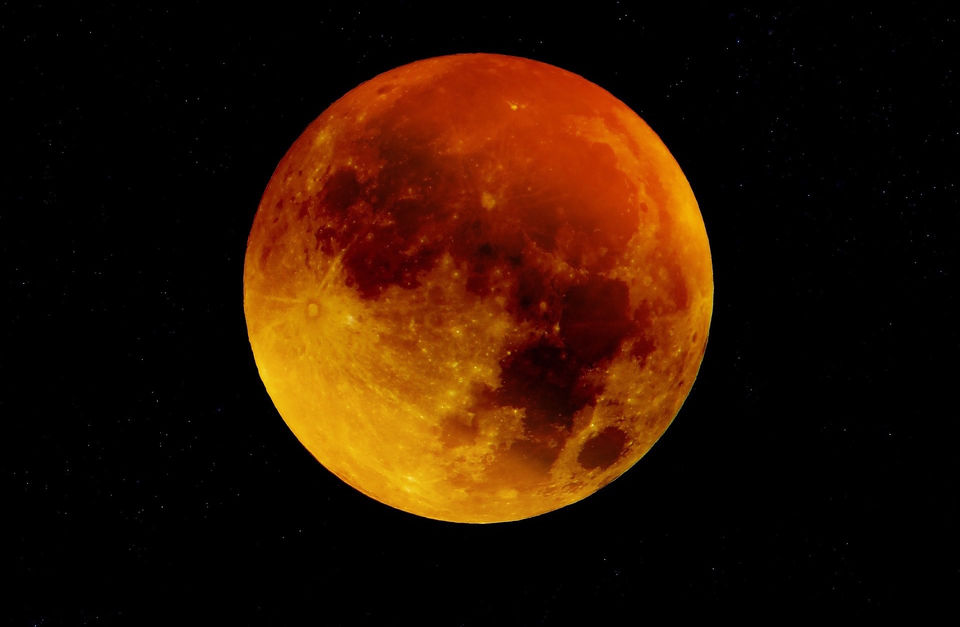Blood Moon: The Appearance of 2021

The moon goes into the earth’s lightest shadow making the
eclipse barely visible. This amazing stage or situation is called penumbral. It
was predicted that North and South America will see a penumbral eclipse on July
5, 2020 and so will Europe and Africa. Following this, on Nov. 30, 2020, North
and South America saw the last penumbral eclipse of the year, including Asia,
Australia and the Pacific region. The next Blood Moon will appear on May 26,
2021 which will be visible from the Pacific Ocea, Asia and Australia and large
parts of the Americas. A Blood Moon spears only twice in three years. But the
number of total lunar eclipses witnessed in a year can vary. This picture sees
the Moon completely covered by the Earth’s umbra for over 60 minutes. The
entire eclipse, including the penumbral and partial phases, will take 5 hours
and 12 minutes.
A total lunar eclipse is the basically what they refer to as
blood moon because a fully eclipsed Moon often takes on a reddish color, which
was seen during the total lunar eclipse in September 2015. Blood moon is not a
scientific word or term. The only other lunar eclipse of 2019 was witnessed on
July 16. Coincidentally, Apollo 11 was launched on the same day that is July 16
about 50 years ago, marking its 50th anniversary. It was the first crewed
mission to land on the moon. Now, researchers say that 2020 will see four
penumbral eclipses, where once again blood moon will be witnessed.
The Appearance of Blood Moon
We need to understand in what situation can a blood moon
appear. Firstly, a total lunar eclipse takes place when the Moon travels
through the Earth’s umbra and obstructs all direct sunlight from illuminating
the Moon’s surface. Despite this, some sunlight still reaches the lunar surface
indirectly, through the Earth’s atmosphere, radiating the Moon in a reddish,
yellow, or orange glow. Fascinatingly, a phenomenon called Rayleigh scattering
filters the a few colors in the light spectrum that are leaning more towards
the violet spectrum. This happens when the sun rays pass through the
atmosphere. The same mechanism is the cause of colorful sunrises and sunsets.
The Red wavelengths are barely affected by this effect, so the light reaching
the Moon’s surface has a reddish hue, which allows the fully eclipsed Moon to
acquire a beautiful red color. The Moon can also look yellow, orange, or brown
during a total lunar eclipse which depends on the composition of the atmosphere
where the varied parts of the light spectrum are filtered.
The term Blood Moon is also sometimes used to refer to four
total lunar eclipses that happen in the span of two years, a phenomenon
astronomer calls a lunar tetrad. With at least five uneclipsed Full Moons
between them, the eclipses in tetrad take place approximately six months apart.
The Occurrence of Blood Moon
Usually, only about one in three lunar eclipses are total,
and about four to five total eclipses can be seen from any single location on
Earth in a decade. Due to such mysterious happenings, lunar tetrads are rare
occurrences, and can lead to some special beliefs. It can also be foundation of
religious customs and superstitious beliefs, or simply fascinating imaginations
of the human brain.
In 2014–2015 that saw the lunar tetrad, grabbed a lot of
attention because some religious organizations spread the word that this rare
appearance can be a sign of the end times. While, some also called the eclipses
Blood Moons in reference to a statement in the Book of Joel in the Hebrew
Bible, that stated the Sun turning dark and the Moon turning red before the
second coming of Jesus.
When the moon does not completely cover the entire sun, it
leaves a ring around the edges which is referred to as “ring of fire”. This
ring of fire, annular eclipse is predicted to take place on June 10 this year.
2020 witnessed the occurrence of a pair of solar eclipses.
An annular took place in central Africa, South Asia, China and the Pacific, on
June 21, 2020. Following this, a total solar eclipse happened in the South
Pacific, Chile, Argentina, and the south Atlantic on Dec 14, 2020. Well, 2020
was an amazing year for the world to witness some fascinating happenings in the
atmospheric realm. 2021 too, has some amazing occurrences that will leave us in
awe of the universe. We know that we live in a beautiful world that is full of
wonderful happenings. But sometimes we just need to really open our eyes and
see the these amazing events to truly appreciate its magnanimous effects.
Here’s a list of all the “blood moons” coming up
in the next 10 years and the locations where they will be visible:
All the "blood moons" coming up in the next 10 years
- May 26, 2021: North America, South America, Asia, Australia and the Pacific
- May 16, 2022: North America, South America, Europe and Africa
- Nov. 8, 2022: North America, South America, Asia, Australia and the Pacific
- March 14, 2025: North America, South America, Europe, Africa and the Pacific
- Sept. 7, 2025: Europe, Africa, Asia and Australia
- March 3, 2026: North America, South America, Asia, Australia and the Pacific
- Dec. 31, 2028: Europe, Africa, Asia, Australia and the Pacific
- June 26, 2029: North America, South America, Europe, Africa and the Middle East
- Dec. 20, 2030: North America, South America, Europe, Africa and Asia














